2019 Subaru WRX STI Review

As far as millennials go, I’m a bit of an oddball.
Open up any American news site and you’ll probably come across articles telling you about all the things millennials have ‘killed’. The sedan is one of them, with my peers scooping up compact crossovers and pickup trucks and avoiding four-door cars like the plague. Another thing that most millennials seem entirely disinterested in is racing. Many of them don’t even want to drive themselves around – let alone watch someone else do it.
Then there’s me. There are few things I like more in this world than a good honest sports sedan and motorsports. So when Subaru rung me to ask if I wanted to take a 2019 Subaru WRX STI to watch a rallycross race, I jumped at the opportunity. It was no shock that none of my friends wanted to come along, though. They were busy brunching, sharing memes and buying avocados like the millennials they are.
That’s a shame, because this wasn’t just any old race I was going to see. I was going to watch Canada’s most famous racing export, Jacques Villeneuve, compete in his first-ever American Rallycross Event with Subaru. What’s more, this race was being held in Trois-Rivieres, Quebec – just a two-hour drive from Villeneuve’s hometown of Saint-Jean-sur-Richelieu. For me, that meant a seven-hour drive on the Friday of a traffic-laden long weekend in the stiffly sprung WRX STI.
Well, at least I had a lot of time to test the car.
FAST FACTS
| Engine: | 2.5-liter turbocharged boxer four-cylinder |
| Output: | 310 hp, 290 lb-ft of torque |
| Transmission: | 6-speed manual |
| Drive orientation: | All-wheel drive |
| Fuel Economy (MPG): | 17 city, 22 highway, 19 combined |
| Price (USD): | $37,480 |
| Price (CAD): | $39,495 |
| Price as Tested (USD): | $39,980 |
| Price as Tested (CAD): | $48,945 |
But How Did the Wing Fall Off?
That’s what one of my friends sarcastically asked when I posted a photo of this 2019 WRX STI on my Instagram. If you’re wondering the same thing, it’s equipped with the new ‘lip spoiler’ instead of the huge cop-magnet wing that you’ll find on nearly every other STI of past generations. To be honest, I kind of missed having the boy racer wing. It’s definitely not for everyone, though, so it’s was a no-brainer for Subaru to offer the lip spoiler as an alternative.
In addition to that small cosmetic change, the WRX STI also gets more power for 2019. The 2.5-liter turbocharged boxer four-cylinder now makes 310 hp – up from 305 hp in 2018. It’s not much, but you won’t catch us complaining about an increase in power, no matter how small.
My test car also came equipped with the available ‘Optional Package’, which adds $2,500 onto the asking price of the $36,595 WRX STI. It brings with it red and black Recaro ultrasuede seats, along with keyless entry and a push-button start. The seats alone are worth the $2,500 asking price – they look great and completely change the look of the STI’s otherwise forgettable interior. They’ll also keep you in place during hard cornering events – of which there will be many in this car.
Nothing Quite Like It
Based on the previous-generation Impreza, the WRX STI’s platform was introduced way back in 2011. This would be a downside for most new vehicles, but for the STI it means it drives like almost nothing else on sale today. With a wonderfully weighted hydraulic steering rack, a metallic-feeling six-speed manual transmission and a raw, stiffly sprung suspension setup, the STI delivers a driving experience that’s unrefined in the best of ways. An increasing number of cars seem to have numb electric steering, forgettable automatic transmissions, and dead throttles – making the STI an analog anomaly that we’re thankful is still around.
That raw driving experience comes with some downsides, of course. As I traveled north from Toronto to Trois-Rivieres, I had plenty of time to observe how the STI drives on the highway. The torquey engine made passing a breeze, but the ride left a bit to be desired. I was ready to forgive it for being stiff, but the STI also exhibited some odd behaviors on the sprawling highway 401. At one point, undulations in the road caused the STI to experience a minor suspension oscillation, which went on for a few minutes. Then the grooves on one section of road sent a strange buzzing noise and a small vibration throughout the entire cabin. It was so loud that I was sure something had broken, but alas, the car was just doing WRX STI things.
There are some other odd aspects, too. I stalled this car the first time I drove it, and while I’m certainly no Jacques Villenueve, I’m placing at least part of the blame on the strange-feeling clutch. The third pedal on the WRX STI is very heavy and has a low bite point that takes some getting used to. The heavy clutch and notchy transmission aren’t so fun to deal with in bumper-to-bumper traffic, but begin to make more sense when you start to hustle the car. This package truly comes alive when you’re driving fast and happily deals with any and all abuse, making it ideal if you want to go to the occasional track day. You probably will want to go the track, too, because the WRX STI is a bad influence on the road. It pokes and prods you to drop a gear and accelerate at the most inappropriate of times, while the talkative steering just begs you to test it out through off and on ramps. This car wants to go fast, and it will let you know it. I’m glad it’s gone – I would no longer have a license if I owned this car.
I wasn’t a fan of the Starlink navigation and infotainment system either, outside of the Android Auto and Apple CarPlay menus. The Starlink navigation was constantly confused and different parts of the system had accessibility issues. You can’t zoom out on the navigation map enough, the map wouldn’t automatically flip from night to day mode and the hands-free system had only a vague grasp of the English language. If you end up in a 2019 WRX STI, we suggest using the Apple CarPlay or Android Auto interface whenever you can.
From Road Car to Rally Car
Racing games like Colin McCrae Rally ensured I was properly obsessed with the WRX STI as a kid, so it was good to see that Subaru is still racing the car today. It was clear from looking at Villeneuve’s car that it didn’t have much in common with mine, however. The WRX STI that Subaru races in American Rallycross is built by Vermont SportsCar – the racing specialists that run the Subaru Rally Team USA. It has huge fender flares, a full FIA-spec roll cage and a 600 hp 2.0-liter turbocharged engine paired with a sequential transmission.
That’s not to say there are zero differences between the car Villeneuve was racing and the one I drove up in. Both cars feature an electronic center differential, which Subaru refers to as the DCCD (Driver Controlled Center Differential). In the road car, this system features six settings, each sending a different amount of power to the front and rear axles. This allows the driver to adjust the handling characteristics based on the surface conditions – helpful if you encounter a loose surface like gravel, snow or mud. In Villeneuve’s race car, the system is controlled by a racing-specific control unit that gives the driver even more control over the differential settings.
Villeneuve also needed some time to get used to his racecar (it’s okay Jacques, mine also took some getting used to, for what it’s worth) and to work his way up to the level of the series regulars. In a brief discussion with the 1997 Formula 1 world champion between qualifying races at the track, Villeneuve told me he hadn’t quite perfected the launch control sequence in the car, leading to him getting a few bad starts in the quarter-final qualifiers. The Quebec native had just six laps of test time prior to this race weekend, though, so it’s no wonder that he needed more familiarization with the foreign machinery.
Stiff Competition
Interestingly, Subaru and Villeneuve compete hard against Ford and VW all weekend, which both make competitors to the WRX STI in the way of the Focus RS and Golf R. When we compared the WRX STI with the Golf R and Focus RS last year (along with the Civic Type R), the WRX STI finished last – mostly due to its strange-feeling clutch, strangely stiff suspension and lack of low-RPM torque.
With newer, more civilized cars beating the WRX STI at its own game in the past few years, Subaru would be smart to make the STI a bit quieter and more comfortable when moving to the next-generation car, which is due in 2020. That should help the Japanese automaker sell more of them and take the fight to Ford, VW, and Honda. I’ll be mourning the loss of this unapologetically analog sports sedan once it’s gone, though.
As for the race, Subaru also had a bit of trouble fending off its rivals there. It managed to beat one of the Fords in the final but lost out to the VWs, which took multiple 1-2 finishes in three races. Villeneuve, who got a flat in the final, finished eighth overall. He’s hoping to land a full-time rallycross ride for 2019, though, so he just may return to Trois Rivieres next year with a bit more rally experience under his belt.
Verdict: 2019 Subaru WRX STI Review
The 2019 Subaru WRX STI is a raw, analog sports sedan that’s the last of a dying breed. With manual transmission cars disappearing from the market today and almost everything pledging to turn into a plug-in, you don’t have much time left to buy a brand-new car with a talkative hydraulic steering rack, a six-speed manual transmission, and unapologetically stiff suspension. It’s certainly not for everyone, but if you count yourselves among those who it is for, it doesn’t get much better than this.
Personally, I fall into the latter of those camps. I’m 25, though. Ask me how I feel in five years and I just may opt for something a bit easier on my back.
LOVE IT
- Talkative steering
- Sharp handling
- No compromise ethos
LEAVE IT
- Suspension is a bit stiff
- Poor navigation and infotainment system
- Loud road and engine noise

Sam McEachern holds a diploma in journalism from St. Clair College in Windsor, Ontario, and has been covering the automotive industry for over 5 years. He conducts reviews and writes AutoGuide's news content. He's a die-hard motorsports fan with a passion for performance cars of all sorts.
More by Sam McEachern



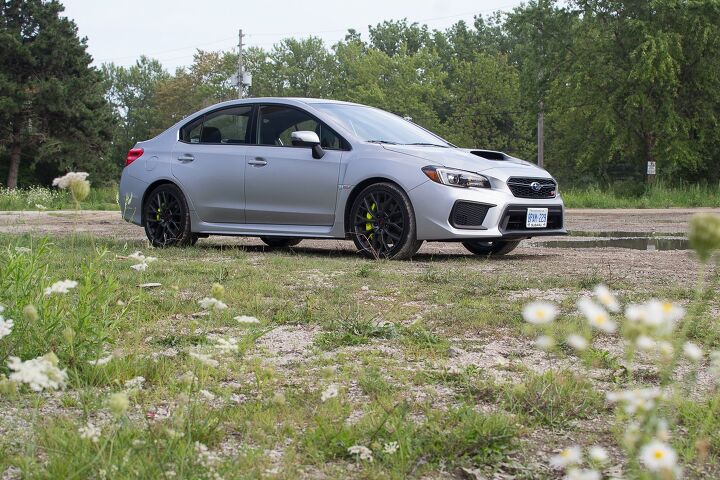











































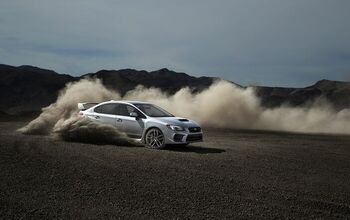




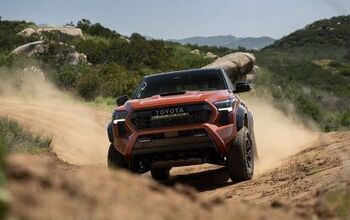


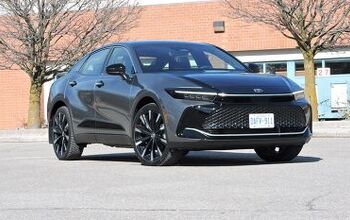
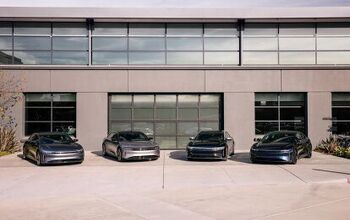


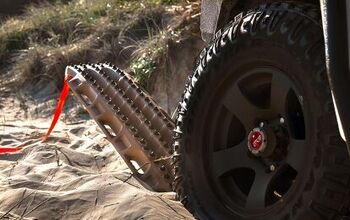


Comments
Join the conversation